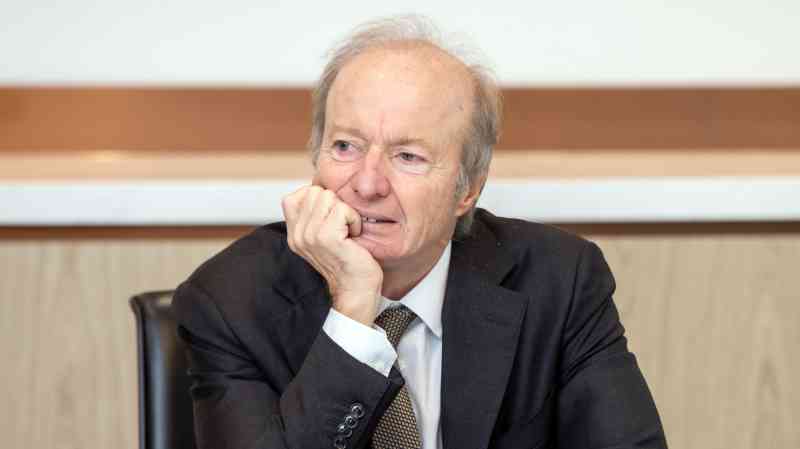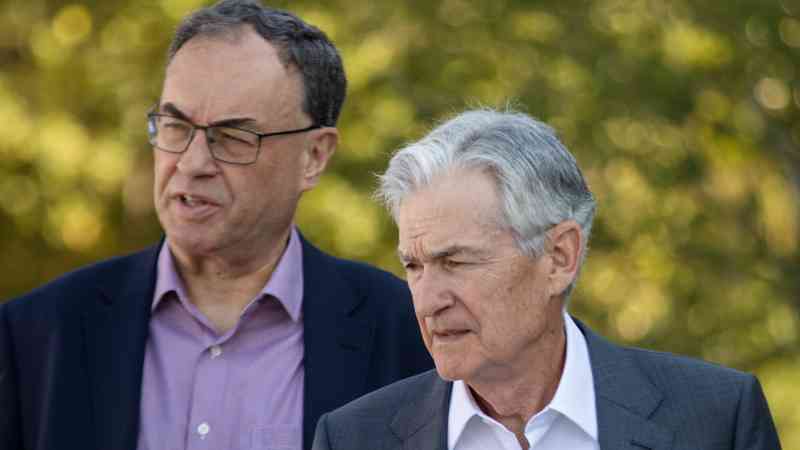Why I’m investing in medical research — and which shares are making most profit
Which creature kills more people every year than any other? Lions, sharks, or are we two-legged animals the baddies? Psst. It might not be what you think.
In less extraordinary times, the media might have given more coverage when the World Health Organisation (WHO) declared a “public health emergency of international concern”. But this news was overshadowed by wars in the Middle East and Ukraine, plus judicial punishment of rioters closer to home. Then the lot of them were pushed off the front page by, er, Taylor Swift.
While I yield to no man in my admiration for the Yankee warbler, it did seem strange to see the WHO warning demoted so far down the news list when the Africa Centres for Disease Control and Prevention (CDC) reported thousands infected and hundreds dead from the reappearance of an infectious virus. Mpox — formerly known as monkey pox — is rarely fatal but often disfiguring. Many sufferers become covered by blisters, like victims of a biblical plague.
• Our best investment platforms for beginners
More positively, helping to fund medical research is one way active investors’ money can make a difference for the better — rather than, say, tracker funds backing the tobacco racket or Chinese concentration camps. That’s why healthcare is one of the biggest sectors in my forever fund, with the pharmaceutical giants Eli Lilly (stock market ticker: LLY) and Novo-Nordisk (NOVO) both featuring among the top ten holdings.
As discussed here before, LLY has weight-loss drugs called Zepbound and Mounjaro plus a treatment called Donanemab that can slow Alzheimer’s disease. This month it reported Zepbound sales of $1.24 billion in the last quarter. Meanwhile, NOVO leads the weight-loss sector with the wonder drug Wegovy and is the world’s biggest maker of insulin, which can help people to control diabetes.
Mpox affects far fewer people than obesity and there is only one vaccine-maker against this disease authorised by the European Medicines Agency (EMA), the American Food and Drug Administration (FDA) and the WHO. So, after failing to find a pooled fund with substantial exposure, I have bought shares in the vaccine-maker Bavarian Nordic Research Institute (BAVA).
Like NOVO, BAVA is a Danish company listed on the Copenhagen Stock Exchange (OMXC). Its main vaccines, Jynneos and Imvanex, reduce the risk of suffering severely from smallpox or mpox while its other jabs shield against cholera, rabies, tick-borne encephalitis and typhoid. Governments and charities make up most of BAVA’s customers but sales to individuals are rising alongside the post-Covid popularity of international travel.
Mpox might stem that trend, or at least give pause for thought, now it has been found in 13 African countries, with one case reported in Sweden. The NHS says the disease is transmitted by close physical contact, which can include shaking hands or kissing as well as sexual intercourse. It adds: “The risk of catching it is low.”
Jean Kaseya, Africa CDC’s director-general, called on countries to “fast-track emergency authorisation of mpox vaccines”. The European Health Emergency Preparedness and Response Authority (Hera) has ordered 175,000 doses from BAVA, which also donated 40,000 doses.
• How to invest £10,000
Back to business, BAVA more than doubled its revenues to 7 billion Danish krone (£800 million) last year, with production costs absorbing nearly DKK2.5 billion while research and development required another DKK2.2 billion. According to the independent statisticians LSEG — formerly the London Stock Exchange Group — BAVA generates gross profits of 61 per cent, which net down to 15 per cent and a return on investment (ROI) of 9 per cent.
The shares are priced at 21 times corporate earnings. That’s not cheap but looks a bit like it, compared with price/earnings (P/E) ratios of 46 at NOVO and 117 at LLY.
So I took profits from NOVO shares I bought for DKK254 in June 2021, allowing for a subsequent two-for-one stock split, by selling at DKK926. As also reported here at the relevant time, I paid $441 for LLY shares last July.
Now the latter cost $945. They are my fourth most valuable holding and NOVO, which was second before I sold some, is my fifth. Turning paper profits into real ones enabled me to invest in BAVA, paying DKK258 per share for stock that traded at DKK276 on Friday.
As if to underline how investing in healthcare does not guarantee healthy returns, Pfizer (PFE) shares I bought for $37 in January 2021 cost $29 this week. However, 5.8 per cent dividend income from the Covid vaccine-maker that fell from favour helps to ease the pain.
Returning to the question with which this column began, “psst” was a clue: the answer is not monkeys or any other mammal, but mosquitoes. BAVA’s annual report is illustrated with a snap of Aedes albopictus, the tiger mosquito, which transmits the chikungunya and dengue viruses.
They used to be problems only in the Tropics, but now warmer weather and flooding are making Europe more attractive to mozzies. These bugs that bite were established in eight countries on the continent a decade ago and now thrive in 13, according to Hera.
Whatever happens next with mpox, demand from travellers for BAVA jabs looks likely to rise. So I am happy to hold 2 per cent of my life savings in the shares, hoping for the best while preparing for the worst.
Why not take a dip into a pooled fund?
Pooled funds, such as unit or investment trusts, provide globally diversified exposure to specialist sectors such as biotechnology and healthcare. So, wherever the next wonder drug may be found, we can help to pay for research and — in the tiny minority that make it to market — share in wealth creation.
Biotech Growth Trust (BIOG) is the top performer in its Association of Investment Companies sector over the past year with a total return of 32 per cent, following 26 per cent over the past five years and 89 per cent over a decade. There are no dividends and annual costs are 1.2 per cent.
Polar Capital Global Healthcare (PCGH) leads the field over five years with a total return of 78 per cent, while it is 23 per cent up over the past year and 192 per cent ahead over a decade. Microscopic income of less than 0.6 per cent is exceeded by 0.87 per cent annual charges.
International Biotechnology (IBT) is in pole position over the decade with total returns of 218 per cent, followed by 29 per cent and 16 per cent over fiver years and one year respectively. Dividend income of 4.2 per cent is offset by steep annual costs of 1.4 per cent.
Sad to say, it has been a while since Worldwide Healthcare Trust (WWH) featured among the leaders with total returns of 21 per cent, 34 per cent and 188 per cent over the usual three periods. A meagre yield of 0.8 per cent fails to match annual charges of 0.9 per cent.
However, WWH shares I transferred from a paper-based broker at £1.35 in March 2014, allowing for last year’s ten-for-one stock split, cost £3.64 on Friday. So I really mustn’t grumble.
Full disclosure: Ian Cowie’s shareholdings




Post Comment